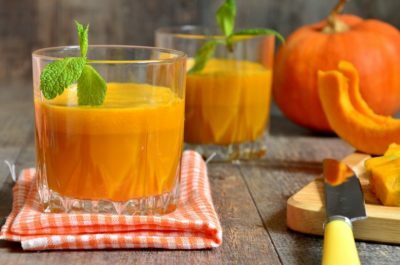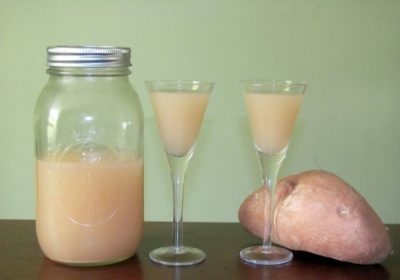The group of pancreatic diseases includes chronic pancreatitis. This pathology is prolonged and difficult to treat. In late therapy it leads to complications (diabetes, jaundice, encephalopathy, portal hypertension, abscess, phlegmon, peritonitis).

Chronic inflammation of the pancreas
Pancreas - an important organ of the digestive system. It performs the endocrine and exocrine functions. The iron produced by important hormones and enzymes (trypsin, lipase, amylase, chymotrypsin, insulin, glucagon). Chronic pancreatitis called predominantly infectious disease of an inflammatory nature, whose outcome is secretory organ failure due to fibrosis (sclerosis).
This pathology develops in most people with acute inflammation. To chronic pancreatitis in adults and children is characterized by undulating course. Exacerbation of symptoms subsided replaced. In recent years, signs of chronic pancreatitis occur more often in the population. The main causes are poor diet, use of low-quality alcohol and smoking.
In women the disease is diagnosed more often.
This is due to the fact that they have this pathology develops in the background of cholecystitis. Common in women aged 50-60 years. Symptoms of chronic pancreatitis often appear in adolescents. They are the main cause of inflammation of the prostate is cystic fibrosis. Known types of chronic pancreatitis in women and men:
- primary;
- secondary;
- pseudotumor;
- pain;
- latent;
- sochetannyj;
- giposekretorny;
- hypersecretion;
- obstructive;
- ductular.
The disease is mild, moderate or severe. Depending on the etiology distinguish alimentary, alcoholic, toxic, biliary, cholestatic and other forms of inflammation. Pancreatitis is obstructive, calcific, fibro-sclerotic and infiltrative fibrous.
etiological factors
Chronic inflammation is caused by several factors. The main reasons are:
- error in the diet;
- alcoholism;
- smoking;
- cholelithiasis;
- gastroenteritis;
- peptic ulcer and 12 tiperstnoj intestines;
- congenital organ development;
- genetic disorders;
- stagnation of venous blood;
- mumps;
- TB infection;
- liver disease;
- exposure to toxic substances;
- family history;
- cystic fibrosis;
- systemic diseases;
- vasculitis;
- trauma;
- poisoning;
- enterovirus infection;
- metabolic disorders;
- cytomegalovirus infection;
- opisthorchiasis.
Experienced doctors are known not only the classification of chronic pancreatitis, but also why it develops. In men, the most common cause is a long-term alcohol consumption of more than 20-80 grams daily. Inflammation does not develop immediately, but after 8-12 years. Women often pancreatitis develops in the pathology of the gallbladder.
This cause is detected in 30-35% of cases. This is due to the fact that the ducts of the prostate and bladder are connected and in the presence of stones broken excretion juice. Causes of pancreatitis in both men and women include inflammation, swelling or narrowing of the sphincter of Oddi. Young people inflammation of the prostate is possible on the background of ulcers. The reason - the penetration.
Chronic inflammation of the pancreas - the result of malnutrition. Risk factors are addicted to fatty and spicy foods, overeating, drinking large intervals and fried food. Chronic pancreatitis is the primary (innate).
In this case, the cause of the inflammation becomes violation patency duct.
pancreatic defeat often occurs due to exposure to toxic substances. These can be drugs (cytostatics, estrogens, diuretics), chemicals (pesticides). Swelling and inflammation of the prostate tissue may be in vascular pathology. This is observed in systemic vasculitis, cardiac and hepatic insufficiency.
The mechanism of pancreatitis
The pathogenesis of the disease is known to everyone. At the core of inflammation based on the following pathological processes:
- difficulty of outflow of pancreatic juice;
- digesting enzymes gland;
- tissue sclerosis;
- circulatory disorders;
- edema.
In chronic pancreatitis Clinic arises against violations of production of enzymes. They begin to digest the iron inside. Develop tissue swelling and inflammation. In the absence of treatment may fester. Over time, connective tissue grows. The amount of iron is reduced. This leads to the secretion insufficiency and disturbance of the digestion process.
Pancreatic juice with bile enters the lumen 12 tiperstnoj intestines. There is the destruction of nutrients (proteins, fats and carbohydrates). In chronic pancreatitis, this process is disrupted, causing indigestion arises as pain, bloating, disorders stool, nausea, vomiting and lack of appetite.
The clinical manifestations of pancreatitis
You need to know not only the causes and pathogenesis of chronic pancreatitis, but its symptoms. you have the following symptoms in inflammation of the pancreas:
- pain;
- nausea;
- vomiting;
- swelling;
- diarrhea;
- burp.
The disease is characterized by a slow progressive course. In the early stages of the complaint may not be available. attack of pancreatitis manifested by pain. It arises from the nerve endings, swelling and disturbance of outflow of pancreatic juice. Pain in chronic pancreatitis has the following features:
- dull, burning, or pressing;
- It may radiate to the back and the heart;
- It is localized in the epigastric area, left upper quadrant or is encircling;
- occurs after meals or alcohol;
- abates during starvation and semi-sitting position.
Pain attack provoked by fatty foods. During remission the symptom is absent. Perhaps the feeling of heaviness. In chronic pancreatitis symptoms include indigestion. It is caused by a violation of the digestion of food enzymes due to insufficient revenues.
Flatulence - the result of increased formation of gas in the stomach and small intestine. Attack of chronic pancreatitis is manifested by vomiting. It is repetitive and exhausting. After vomiting the patient is not getting better. Initially, in the vomit food is present. bile and then excreted. Patients complain of a bitter taste in the mouth.
Attack of chronic pancreatitis is characterized by impaired stool. This is due to incomplete assimilation of food in the small intestine. She arrives in the colon, where bacteria helps to activate. Chair patients becomes mushy. Often the diarrhea replaced constipation. Chronic pancreatitis is characterized by steatorrhea. Feces becomes bold and brilliant.
For dyspepsia refers belching. It's bitter or air. Indirect signs of the disease include loss of appetite. In some patients, there is an aversion to meat dishes. Symptoms of an exocrine gland failure related weight loss. If you do not cure chronic pancreatitis forever, it may develop vitamin deficiencies. It manifests dullness of hair, their fragility, dryness of the skin and nail changes.
Possible complications of the disease
Doctors need to know not only the pathogenesis of chronic pancreatitis, but also what he is dangerous. In case of incorrect treatment or delayed diagnosis may develop complications. If acute attack left unattended, it can develop:
- diabetes;
- cachexia;
- encephalopathy;
- vitamin deficiencies;
- hepatitis;
- cholecystitis;
- portal hypertension;
- purulent inflammation of the peritoneum;
- phlegmon;
- abscesses;
- false cysts;
- left-sided pleural effusion;
- atelectasis of the lung;
- jaundice;
- inflammation of the tissue around the pancreas;
- splenomegaly;
- infarction of the spleen;
- cholangitis;
- renal failure;
- disseminated intravascular coagulation;
- bleeding;
- esophageal varices.
If the treatment of chronic pancreatitis is a long time is not carried out, it increases the risk of malignant disease. Threatening complication of the disease is the development of secondary diabetes. The pancreas produces insulin hormone, which is responsible for glucose utilization. Pancreatitis his development is hampered, resulting in hyperglycemia.
For such people there are thirst, dry skin, and polyuria.
Increases urine output. Possible dehydration. How dangerous chronic pancreatitis, known not to everyone. The possible negative consequences of the disease include the festering tissues. Having cellulitis and abscess. The latter is formed slowly. Indicate the presence of an abscess symptoms such as fever, chills, tachycardia, severe pain, tension of the abdominal muscles, nausea and vomiting.
In the case involved other organs (lungs, heart), the spread of infection in the process. Developed pleurisy, pneumonia and pericarditis. If pancreatitis is not fully cured, the increased pressure in the bile ducts. This leads to the development of biliary hypertension. Threatening complication is encephalopathy. If it affected the brain. There are complaints neurological.
Plan examination of patients
Before you treat chronic pancreatitis, it is necessary to clarify the preliminary diagnosis. Reveal inflammation on the basis of complaints is not possible, because the symptoms are non-specific and occur at different pathology. Examination of patients should be comprehensive. For diagnosis will need:
- general and biochemical blood tests;
- retrograde cholangiopancreatography;
- coprogram;
- general urine analysis;
- ultrasound;
- test with secretin and cholecystokinin;
- Analysis for amylase and lipase;
- CT and MRI.
You must know the laboratory signs of pancreatitis. At this pathology revealed the following changes:
- reduction in blood total protein, albumin and globulin;
- leukocytosis;
- increased erythrocyte sedimentation rate;
- an increase of amylase in blood and urine;
- hypocalcemia;
- decrease in total cholesterol;
- high concentrations of trypsin, lipase, and glucose;
- presence in the feces of large amounts of lipids, muscle fibers and starch.
To evaluate the secretory function performed functional tests. Upon stimulation secretin organ enhanced formation of water and bicarbonate pancreas. To assess the body condition requires the use of diagnostic equipment. Very informative ultrasound of the abdomen.
The presence of chronic pancreatitis indicate such features as the expansion duct cancer, a change in its dimensions, the seal portions (calcification), uneven contours and features of multiple sclerosis. Often found cysts. A more detailed examination allows for endoscopic ultrasonography in combination with ultrasound.
In chronic pancreatitis, the treatment is carried out after assessing the bile ducts. For this purpose the colorant. This study is called retrograde cholangiopancreatography. Differential diagnosis of chronic pancreatitis in the acute phase is performed with a perforated gastric ulcer and 12 tiperstnoj ulcer, acute cholecystitis, myocardial and intestinal obstruction.
When inflammation of the gall bladder pain is localized mainly in the area of the right hypochondrium. Pancreatitis must be differentiated from intestinal obstruction. In the latter case, in the process of X-ray revealed the bowl Klojber and air arches. For perforated ulcers is characterized by very sharp (knife-like) pain.
Methods of treating patients
Treatment depends on the complaints and inflammation phase. In the acute phase requires:
- receiving symptomatic drugs;
- temporary starvation;
- observance of peace;
- rejection of alcohol and smoking;
- application antacid and antisecretory agents;
- the use of somatostatin analogues.
How to cure chronic pancreatitis, everyone should know gastroenterologist. In the acute phase being symptomatic therapy. When vomiting is assigned Vero metoclopramide, Reglan or Perinorm. Reviews of physicians to these drugs positive. In case high temperatures are used antipyretics (Paracetamol MS Panadol and Efferalgan). The regimen includes the use of analgesic drugs. These include analgesics and antispasmodics.
physician treatment recommendations must be followed. In chronic pancreatitis disturbed synthesis bicarbonates, it is required to protect the gastric mucosa from acid. Work gland is dependent on the production of gastric juice.
In this regard, pancreatitis shown antacids and antisecretory agents (proton pump blockers).
These include Gastal, Almagel, Fosfalyugel, Gaviscon, Omez, Pariet and Rabiet. If during the treatment of chronic pancreatitis antispasmodics do not help, somatostatin analogues are used. These include Octreotide, Sandostatin, Oktrid and Oktreteks. In chronic pancreatitis in remission phase is required to follow a diet and taking enzyme preparations.
When the secretory deficiency appointed Creon Mezim or Panzinorm. It is a standard for the treatment of chronic pancreatitis. Enzymes are contraindicated in the acute phase of inflammation. With the development of septic complications intramuscularly or intravenously administered antibiotics. Infusion therapy is conducted. In addition, patients prescribed vitamins. With the development of diabetes need to monitor the concentration of glucose in the blood. Hypoglycemic drugs can be administered.
Diet for pancreatitis
Is it possible to cure chronic pancreatitis, known not to everyone. After a temporary starvation and pain management assigned a diet number 5b. Its main purpose - the prevention of subsequent relapse. Clinical nutrition involves maximal sparing of the gastrointestinal tract. In chronic pancreatitis in remission will stand, if the following recommendations:
- excluded from the menu fatty and fried foods;
- abandon extractives, pickles and marinades;
- eat fractional 5-6 times a day;
- do not eat before going to bed;
- eat food in powdered form or a semi-liquid;
- the brutal products;
- to cook steamed or boiled;
- reduce the amount of salt;
- to give up alcohol and coffee;
- eat meals room temperature;
- comply with equal intervals between meals;
- do not overeat;
- gradually expand the list of foods and dishes.
This standard clinical nutrition in this pathology of the pancreas. Patients need to reduce the consumption of sweets, high-melting fat, cholesterol, purine, crude fiber, and essential oils. From the menu you want to exclude a fresh rye bread, sweet pastries, hodgepodge, nourishing soups, soda, coffee, fatty meats and fish (duck, pork, horse mackerel), by-products, sausages, cream, sour cream, smoked products, pickles, spices, mayonnaise, egg yolks, chips, crackers, fried eggs, mushrooms, raw vegetables and greens, neprotertye sour-sweet berries, spicy sauces, cold drinks, margarine and canned.
When this disease can have vegetable soups, dried bread, lean meat, seafood, lean cheese, lean fish, cereals, yogurt, yogurt, mashed and boiled vegetables (potatoes, carrots, zucchini, eggplant, pumpkin), protein in the milk of omelets, scrambled eggs, meatballs and baked apples. From drinks pancreatitis resolved rather weak tea, sweet juices, fruit drinks, jelly and broth hips. The prognosis of chronic pancreatitis depends not only on the doctor, but also on the patient.
Diet should be followed for 1-2 months.
Surgical treatments
If the diagnosis of chronic pancreatitis has been delayed, there may be complications. In this case, surgical care is provided to patients. Indications to it can be:
- cysts;
- abscesses;
- phlegmon;
- accompanying calculous cholecystitis;
- necrosis of the pancreatic tissue;
- peritonitis;
- expressed sclerosis;
- stenosis of the sphincter of Oddi;
- obstruction of the bile ducts;
- the presence of calcifications.
Treated if complicated pancreatitis, known not to everyone. In this case, the following types of surgery may be required:
- sanitation;
- drainage;
- sphincterotomy;
- excision of the nerves;
- partial resection of the stomach;
- cholecystectomy;
- virsungoduodenostomiya;
- removal of stones;
- opening cysts.
The presence of an abscess - an absolute indication for surgery. Preferably conduct endoscopic treatment. Necrotic tissue excised. Abscess opened and drained. Be sure to evaluate the state of the surrounding tissues.
Forecast for Health and Prevention
It is necessary to know not only the symptoms and treatment of pancreatitis in adults, but what is the prognosis of this disease. In compliance with all recommendations gastroenterologist remission occurs. Weather favorable. it worsens during the development of septic complications. If there is an abscess and surgical care without the risk of death is very high.
After surgery, the survival rate is about 40-50%. If the disease continues for more than 20 years, there is a possibility of malignant transformation of tissues. In 4% of patients developed adenocarcinoma. Specific prophylaxis of chronic pancreatitis is absent. To reduce the risk of developing this disease, you need to:
- stick to a healthy diet;
- drink plenty of clean water;
- reorganize foci of chronic infections;
- timely treat cholecystitis, hepatitis and other diseases of the digestive organs;
- stop smoking;
- prevent abdominal trauma;
- increase resistance to stress;
- not to drink alcohol;
- take medications strictly prescribed by a doctor and in the allowed dosage;
- to prevent stagnation of venous blood;
- lead sedentary lives.
The main measures of prevention of chronic pancreatitis are avoiding alcohol and dieting. Do not overeat, eat greasy and spicy foods. To avoid complications, it is recommended 1-2 times a year to be screened. Thus, a chronic form of pancreatitis develops in the acute inflammation. The presence of pain after eating, nausea, vomiting and other symptoms is a cause for ultrasound and delivery of analyzes. The treatment without medical advice can lead to complications.



